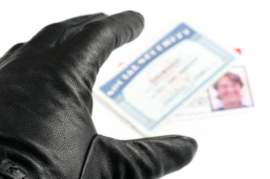
Quick Guide to Understanding Concealment of Assets

Out of the three main types of bankruptcy fraud, concealment of assets is the most common, because it is the simplest to do, and also the easiest to do accidentally. In any bankruptcy proceeding, the party declaring bankruptcy must list all assets available to him, her, or it, such that the bankruptcy proceedings can accurately judge how best to deal with those assets.
In chapter 7 bankruptcy, for example, all assets of the party declaring bankruptcy are liquidated in order to pay off debts as best as possible. As a result, the bankruptcy proceeding needs a clear and full set of financial statements from the bankruptcy claimant, as well as just a general listing of all assets that the bankruptcy claimant might have. To hold anything back from these lists would break fraud laws.
But many do try to conceal their assets, anyway. Close to 70% of fraudulent bankruptcy
Beyond simply misrepresenting information, a bankruptcy fraudster who commits concealment of assets can also hide assets. Moving funds into off-shore accounts is the classic example, and doing so most assuredly violates fraud laws. But doing so would also hide such assets from any sort of declaration process, not least because it would remove those assets from the reporting individual's financial statements.
The bankruptcy claimant could also attempt to give his or her funds to family members or friends, so that those individuals could hold onto those assets until the bankruptcy claim has completed, and then the claimant could receive those assets back from his friends or family.
In order for someone who is legitimately trying to apply for bankruptcy to avoid any possible infraction against fraud laws, he or she must make certain to report every last bit of information about his or her assets. Even items which may not seem to have any value need to be reported, as one of the primary rules of bankruptcy procedures is that the debtor does not get to determine the value of the assets being liquidated or reorganized.
The creditors have final say on those matters, and as a result, every item that could possibly be considered to hold value must be reported as an asset. All financial statements must be divulged to the proceedings, along with any other important information, such as assets you may not have yet, but may be expecting.
In the end, concealment of assets is such a commonplace form of bankruptcy fraud that it would also seem to be the type of fraud investigators have best learned to root out and eliminate. All that an investigator needs to do is find the hidden assets, or find some form of financial statement that will prove that the assets still exist, and the fraud will be proven.
The perpetrator will then be charged fully for his violations of fraud laws. Regardless, then, of the prevalence of this form of fraud, it remains fairly clear that the risk of penalty is far too great to make the hope of gain worthwhile.



















